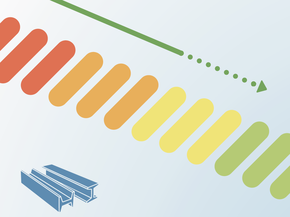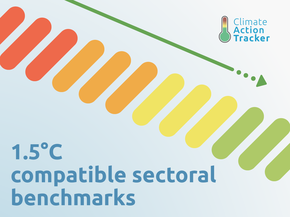Pledges And Targets
Summary table

Paris Agreement targets
Viet Nam’s Nationally Determined Contribution (NDC) includes conditional and unconditional mitigation components. Viet Nam has unconditionally committed to reduce GHG emissions by 8% by 2030 below business as usual levels (BAU) (Viet Nam Government 2016).
Viet Nam committed to a conditional target of reducing GHG emissions by 25% based on international support such as technology transfer and capacity building. These targets include all sectors, but excludes emission from industrial processes and product use, and the NDC gives no reason why these emissions are excluded.
The business as usual pathway set for the NDC appears hyperinflated. The difference between total emissions (excluding IPPU and LULUCF) from 2010 levels to 2030 is 240%. The BAU is based on the latest data at the time of developing the NDC, which was 2010 (Viet Nam Government 2016). Inflated BAU pathways make emissions targets and current policy pathway appear more ambitious than they really are.
BAU estimates in the NDC (incl. LULUCF, excl. IPPU) for 2020 are 474 MtCO2e, and 787 MtCO2e in 2030 (Viet Nam Government 2016). The NDC targets are 8% (unconditional) or 25% (conditional) reduction in emissions from the 2030 figure, which amount to 725 MtCO2e (unconditional) and 589 MtCO2e (conditional), including LULUCF, and excluding IPPU.
As Viet Nam’s NDC excluded industrial processes, we have calculated industrial process emissions to amount to an additional 78 MtCO2e in 2020 and 126 MtCO2e in 2030 following specific assumptions (see assumptions). Factoring in industrial processes, the unconditional NDC emissions target translates to 851 MtCO2e and 716 MtCO2e in the conditional target (incl. LULUCF).
The consideration of IPPU would translate to an unconditional target of a 7% emissions reduction below BAU and a conditional target of a 22% emissions reduction below BAU, instead of 8% and 25% respectively.
Viet Nam’s NDC includes further pledges on the emissions intensity per GDP as sub targets. The unconditional target is to reduce emissions intensity per unit of GDP by 20% below 2010 levels in 2030, and the conditional target based on international support, is to reduce emissions intensity per unit of GDP by 30%. Viet Nam will meet the targets (and to use the language of the NDC) “in which” it will achieve emissions intensity per unit of GDP targets.
The pledge description creates uncertainty surrounding whether the intensity targets include IPPU or not. IPPU CO2 emissions are included in government historical emissions data, but all IPPU emissions are excluded from government BAU data (Viet Nam Government 2015, 2016).
The emissions intensity of GDP in 2010 was 0.094 MtCO2e /VND million (see assumptions). The unconditional 20% reduction target was calculated to be 0.075 MtCO2e /VND million in 2030. The conditional 30% reduction target is 0.066 MtCO2e /VND million.
The emissions intensity per GDP unconditional target translates to 804 MtCO2e in 2030 (incl. LULUCF and IPPU). The conditional target translates to 703 MtCO2e in 2030 (incl. LULUCF and IPPU). This target translates to an unconditional reduction of 12% below BAU levels and a conditional target of 23% below BAU levels.
Another unconditional target in Viet Nam’s NDC is to increase forest cover to 45%. The latest government figures find that forest coverage amounted to 41% in 2016 (MNRE 2019), so Viet Nam would need to increase its forest coverage by another 4%.
Viet Nam’s NDC also has a climate adaptation component, as it is vulnerable to the effects of climate change. The NDC lists several adaptation measures necessary to protect itself from floods and drought, which exceed its capacity, and highlights the need for international assistance (Viet Nam Government 2016).
Viet Nam is currently revising its NDC in collaboration with the German Government and GIZ (Fujii 2018). The updated NDC is due in the first half of 2020 (World Bank. 2019). The proposed revision is not publicly available. It is reported to include changes to the base year,1 the business-as-usual scenario, the conditional emissions reduction from BAU target, and the addition of the (currently excluded) industrial processes sector (Partnership on Transparency 2018).
The proposed revision is reported to include the Revised Power Development Plan 7 (Partnership on Transparency 2018). Considering Viet Nam will meet its current target, and since the NDC is rated critically insufficient, the update should revise the unconditional and conditional target percentage reduction in line with a Paris compatible pathway which would also need to revise its Power Development Plan in line with the Paris Agreement.
After comparing our calculations with other assessments of Viet Nam’s NDC (Paris Equity Check 2019; PRIMAP n.d.; Vieweg et al. 2017), it is clear that all other assessments provide an underestimation. These other assessments have not accounted for the contribution of industrial process emissions in 2030. Our calculations factor in industrial processes to provide an economy wide target, and highlight the emissions intensive sectors of energy and industry. Our assessment provides figures that can then be compared to other country targets for an economy wide perspective. In this sense, the CAT has provided an important contribution to understanding Viet Nam's commitments.
1 | 2010 is the base year of the BAU, it is also part of the emission intensity per unit of GDP targets. A change in the base year may affect both the emissions reduction and emissions intensity per unit of GDP targets.
Further analysis
Latest publications
Stay informed
Subscribe to our newsletter





